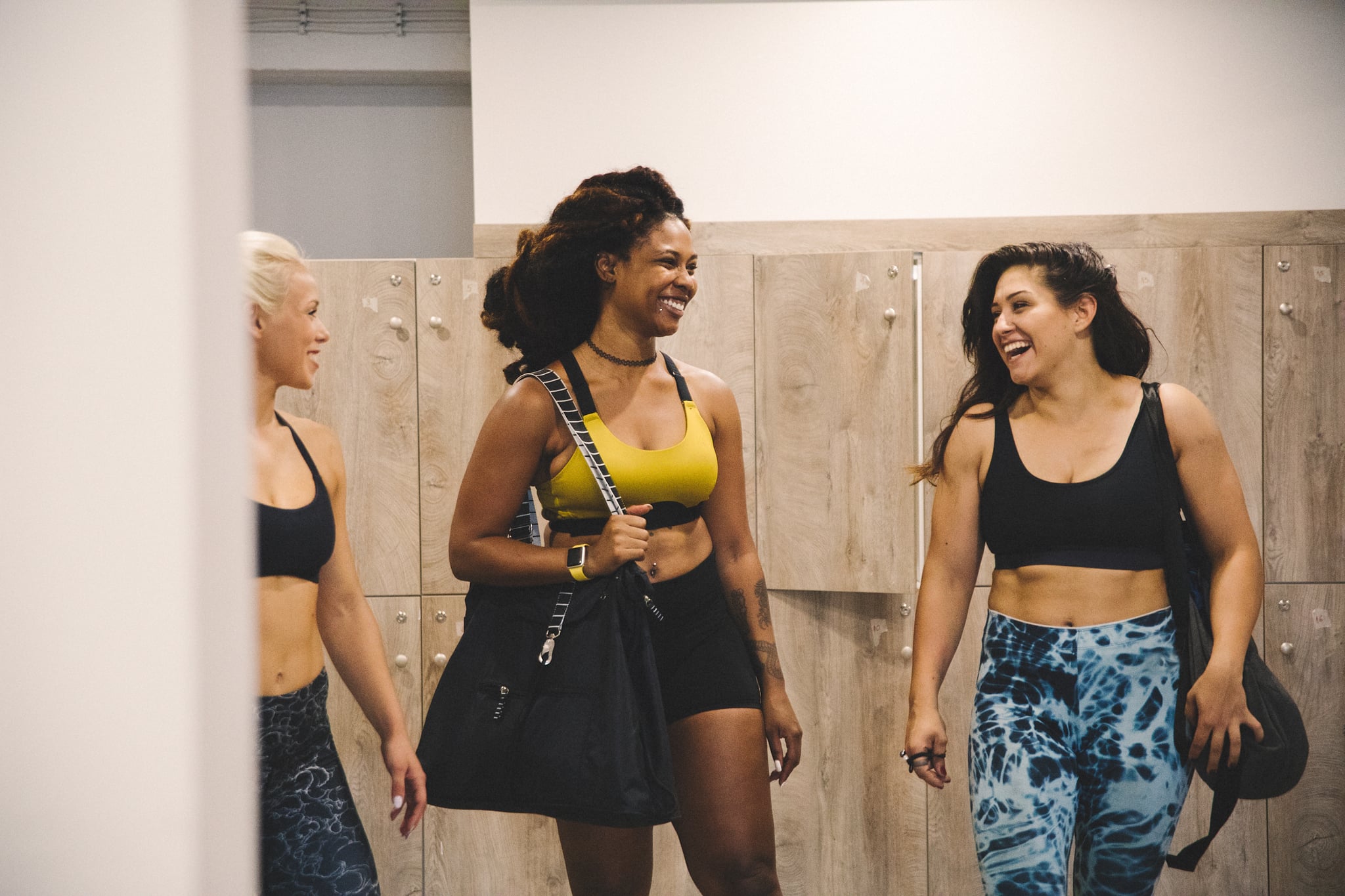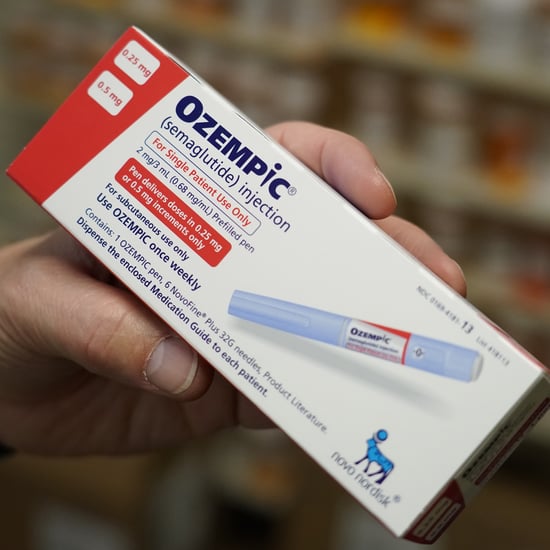How Long Does It Take to See Results After Exercising?
How Long Does It Take See Results After Exercising? Experts Weigh In

Exercising comes with a vast array of benefits, both physical and mental. Working out can increase your life expectancy, strengthen your heart, boost your mood, help you lose weight or prevent weight gain, and reduce your risk of mild illness (such as the common cold), as well as other more serious health conditions like heart disease and high blood pressure, according to the Mayo Clinic. But how soon after you begin working out will you start to see results?
Great news: you'll likely see some of the mental health results of exercise immediately. For example, you'll get a rush of feel-good endorphins during and immediately after exercise, and being active can also help you take your mind off your worries while you're moving, according to the Mayo Clinic. Other results, however, take more time.
To preface: no two people's results will be exactly the same. "Our bodies are all different and respond to exercise in different ways, and that's normal," Chris Gagliardi, MS, ACE-certified personal trainer, says. "The important thing is to find and participate in an exercise programme that works best for you."
That being said, experts do have some insight into how long it takes to see or feel results from working out, depending on your goals and your training. This is what they have to say.
In General, How Long Does It Take to See Results From Working Out?
It depends on the type and amount of exercise you're doing. "The physiological changes a person notices when they first start working out depend on the types of exercise they're performing on a consistent basis," Gagliardi says. Your body will respond to exercise if you progressively overload the system being trained — meaning you continue to challenge yourself, whatever type of exercise you're doing.
However, there is a general rule of thumb for when you'll see true physiological changes happen. "When performed appropriately, exercise can lead to physiological changes in about eight to 12 weeks for most people," Gagliardi says. "This does not mean that everyone will respond to exercise in the same way. Some people may see and feel results in less than eight to 12 weeks, and for others, it may take more time."
And a big reminder — many of the important adaptations your body is making aren't visible. For example, some of the physiological changes that occur with cardiorespiratory training include:
- A lower heart rate while resting and during exercise as your heart becomes fitter and more efficient at pumping blood
- Increased maximal oxygen consumption, meaning your breathing is more efficient
- A decrease in blood pressure
- Improved bone density (aka healthier and stronger bones)
- Improved glucose control
- Keeping your metabolism from slowing as you age
And some of the physiological changes that happen from resistance training include improved or maintained muscle mass and improved muscular strength and endurance.
"Together, these changes lead to a greater physiological reserve, or capacity to do work, and allow you to perform everyday activities with less stress and strain," Gagliardi says.
And don't neglect to think about the psychological changes you'll get from regular exercise, too, including improved mood, decreased stress and anxiety, decreased depression, improved quality of life, and better sleep, Gagliardi adds.
How Long Does It Take to Notice Weight Loss From Working Out?
If you're trying to lose weight through exercise, you may start seeing results in as little as two to three weeks, says NASM-certified personal trainer Guychard Codio, cofounder of New York City Personal Training. For other people, it may take longer. NASM-certified personal trainer Ashley Kelly says her clients typically start seeing results in about six weeks.
Even if it's possible to see changes in just a few weeks, you shouldn't rush your approach over a short period of time. If you want to keep the weight off, you'll need a routine that progresses slowly and steadily instead of one where you're going all out from the beginning, trying to lose weight as fast as possible, Codio explains. For example, both the CDC and the Mayo Clinic recommend aiming to lose only one-half to two pounds per week, no more. That means after pursuing weight loss for six weeks, it's safe to have lost between three and 12 pounds.
Keep in mind that you may not continue this rate of weight loss in the long-term, Gagliardi points out. "When it comes to initial weight loss, a common goal to strive for is the loss of one to two pounds per week. Initially, weight loss may occur more rapidly and with what feels like less effort," he explains. But "as you begin to lose weight and improve your level of fitness, more time, energy, and effort may be required to achieve the same level of weight loss or to prevent and reduce weight gain."
And you cannot lose weight "instantly" during a workout. "It's important to note that changes in weight may occur during a workout and this should not be confused with the type of weight loss that occurs gradually over time," Gagliardi warns. "This immediate weight loss is usually the result of changes in hydration status. Appropriate hydration guidelines should be followed when exercising." You'll want to hydrate before, during, and after your workout, drinking 16-20 ounces of water for every pound of water weight lost, specifically.
That said, there are many variables that impact weight loss, "including food consumption and quality, exercise levels (frequency, intensity, type, time), lifestyle behaviours (e.g., sleep, leisure time activities, stress), hormonal changes, ageing, and many other factors," Gagliardi says.
Finally, it's also important to note that the scale is not the only indicator of weight loss progress. You can also judge physical changes based on how your clothes fit, how you look in the mirror, or your body fat percentage. In fact, if you're strength training, you could be gaining muscle, which could make the number on the scale go up, Kelly says — and that's a good thing for long-term weight loss goals as well as for your overall health. The more muscle you have, the easier it is for your body to lose fat and burn calories throughout the day, Codio says.
(Editor's note: tracking specific metrics like body fat percentage or even pounds lost can be triggering for certain people who have a history of disordered eating.)
How Soon Can You See Muscle Growth After Working Out?
When you first start strength training, you may think you're seeing some muscle growth or feeling stronger right off the bat. But that isn't a result of your muscles getting bigger. "Initial adaptations are neurological and are primarily the result of you learning how to use your muscles and move your limbs more efficiently," Gagliardi says. "Essentially, you're learning how to exercise and getting better at it." These neurological changes (which happen in the first four to six weeks of training) account for initial increases in strength — not actual muscle growth.
Long-term adaptations — such as increases in muscle size, strength, endurance, and power — may begin to occur in eight to 12 weeks, he says.
In general, muscle growth is a slow (but rewarding!) process. Research has found that 0.5 to two pounds of muscle growth per month is a good estimate for the maximum muscle growth possible in healthy adult males with good nutrition and consistent training. While that study only looked at adult men, other research suggests that changes in muscle size and strength as a result of resistance training vary more by individual than they do by sex. Meaning, 0.5 to two pounds per month is likely the "ceiling" of maximum muscle growth regardless of your sex assigned at birth.
And as with weight loss, exercise isn't the only factor that influences your strength gains. To see muscle growth, you also need to be eating enough carbs and protein so your body has the fuel necessary to repair and rebuild your muscles after training — which is the process that results in muscle growth. For that reason, Ashleigh Kast, NASM-certified trainer, notes that people who weight train and don't address nutrition will have a harder time achieving and sustaining results. If you're concerned about your nutrition while trying to gain muscle, consult your doctor or a registered dietitian for guidance.
Bottom Line: Exercise Results Go Deeper Than What You Can See
"It's important to not compare yourself to others and their rate of change but to focus on how exercise is changing you physiologically and psychologically in addition to other benefits you may be experiencing," Gagliardi says. Remember how much good exercise is doing for your overall health (mental and physical) in addition to whatever changes you may see visibly.
As with making a change in any aspect of your life, Kelly notes that "if you're consistently doing something and wait at least 21 to 42 days, then you will see changes." Check out some of our workout plans for inspiration on where to start:
— Additional reporting by Samantha Brodsky






